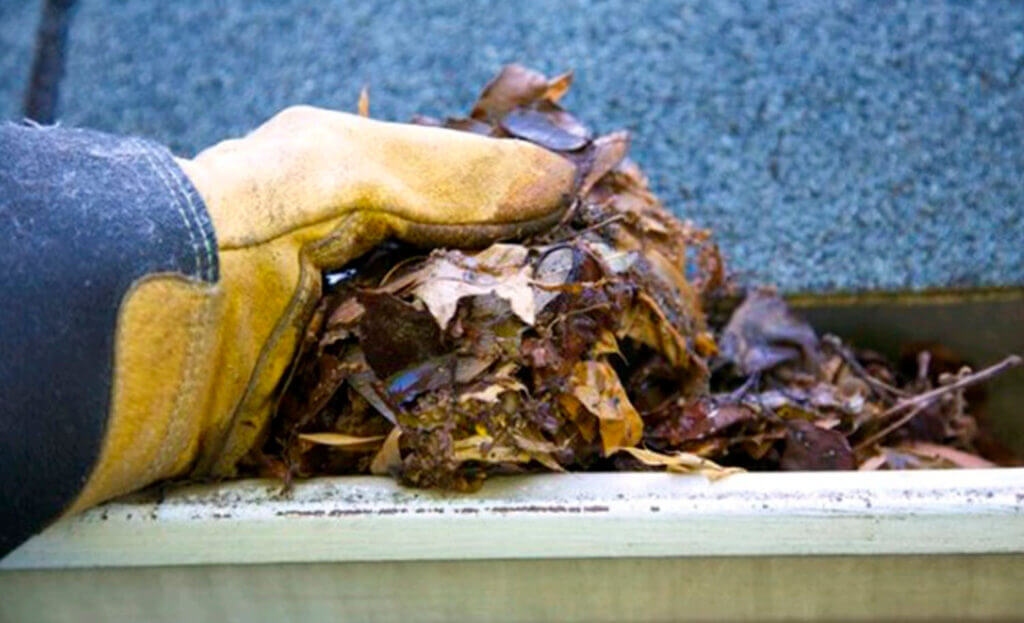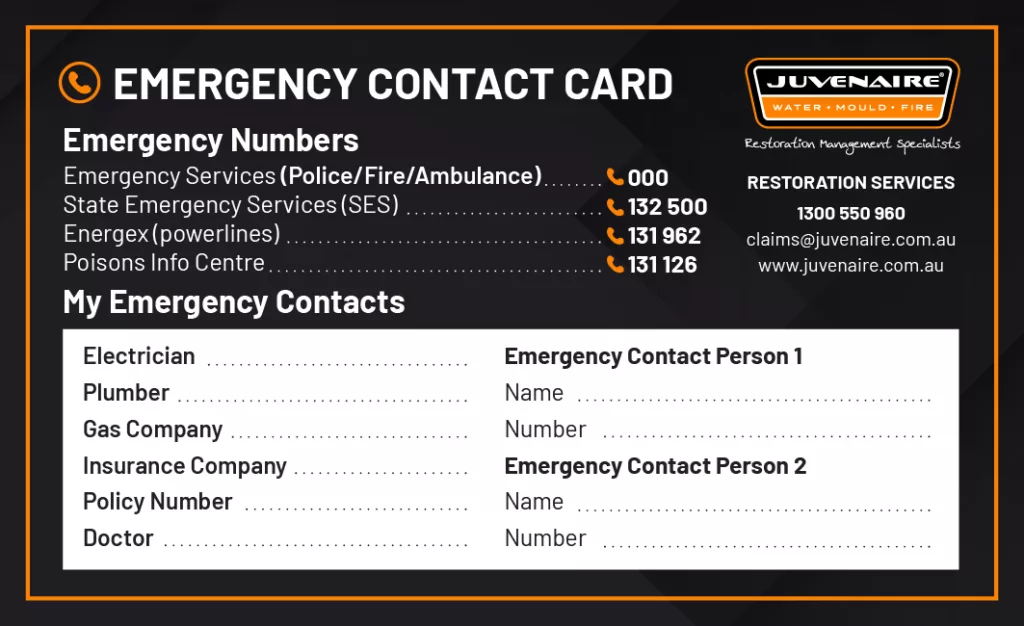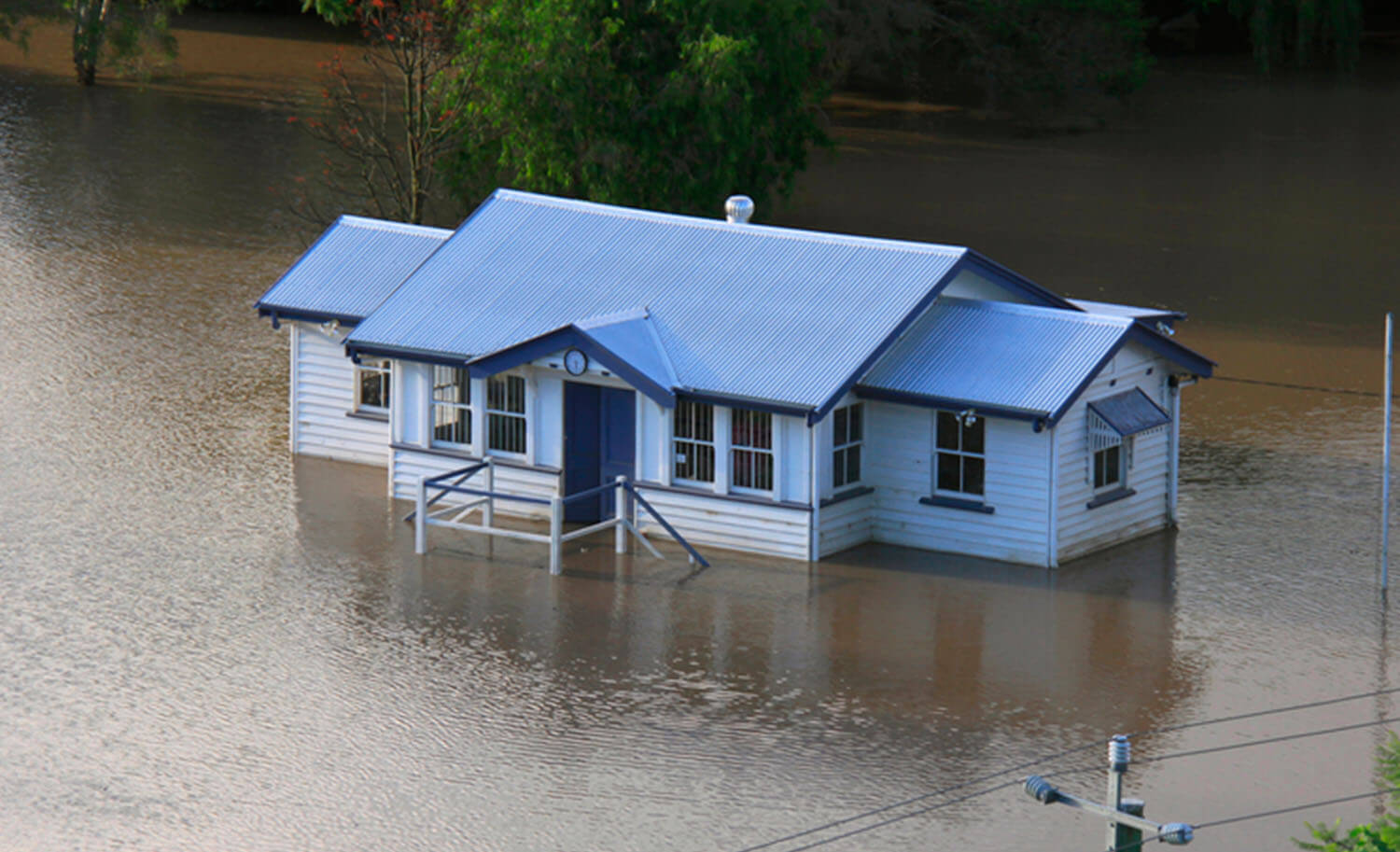Storm and flood preparation generally can help to reduce damages and protect valuables in the event of a disaster. Because many homes are in Queensland subject to flood-prone regions, these properties and businesses are at risk of destructive flooding.
In a flood disaster your first priority is the safety of yourself, your family and the people around you. Before the water reaches you, move your car to a safe place (under cover, away from trees and waterways), but you should never walk or drive through flood waters no matter how shallow they appear to be. Turn off electricity, gas and water.

Preparing your home
Here is a list of recommendations to follow for storm & flood preparation:
- Check the condition of the roof and repair loose tiles and eaves.
- Clean gutters and down pipes so water can drain away as quickly as possible.
- Trim trees and overhanging branches.
- Secure loose items that could cause damage with high winds (gardens, patios and balconies).
- Move personal documents, sentimental and irreplaceable items to a higher floor or area.
- Raise electrical items and any white goods to a higher area.
- Identify where and how to turn off the mains supply for water, power and gas.
- Prepare an emergency kit (including drinking water & food, phones, medications, clothes, torch & battery powered radio)
- Take photos of your property and contents, document your valuables.
- Ensure that your home, car and contents insurance policy covers you for flooding.
- Print and complete the emergency contact card and keep it with you (below)

Do not turn on any devices that have been wet. We also recommend you contact your insurance company to inform them about the situation and keep your property well ventilated to help it dry.
Don’t enter floodwater. Never drive through floodwater.
We advise you to keep listening to your local radio, check weather updates and evacuate when told to do so. For emergency assistance, call 132 500 (SES, Flood Storm Emergency – Queensland).
Are you in a flood prone area?
Contact your local Council to view the flood map for your area.
In QLD the storm season is between November and April. Storms can occur at any time of the year but are more common during this period. Because of this it is important to take action and prepare your home for potential storm and flood damages. Being well prepared reduces the impact of flooding, this increases the likelihood of salvaging building materials and your home contents.

Sewage & Black Water
If advised that it is safe to return to your home, be aware of potential contamination caused by flood water. Water is quickly absorbed through the pores of building materials which causes further damage. The severity of the health threat depends on the source of the water and also the extent of penetration into the building environment.
Sewage is black water contamination. This means it is highly contaminated and as a result is extremely unsanitary and a high health risk. Sewage back-flow poses a very significant threat to human health because it can harbour a wide variety of pathogens.
Floodwater or storm water which has not been directly impacted by sewage discharges is still highly likely to contain a wide variety of microbiological organisms (e.g. animal waste, street runoff) and must be properly managed. Some of these pathogens, such as mould spores, can even establish an ecological niche and present a health risk after the flood event.
For more info on Juvenaire’s water restoration service click here
If you have had rain damage or water has entered your property and you have concerns, feel free to contact us or email us: claims@juvenaire.com.au or call 1300 550 960 to speak to a Juvenaire Project Manager.
